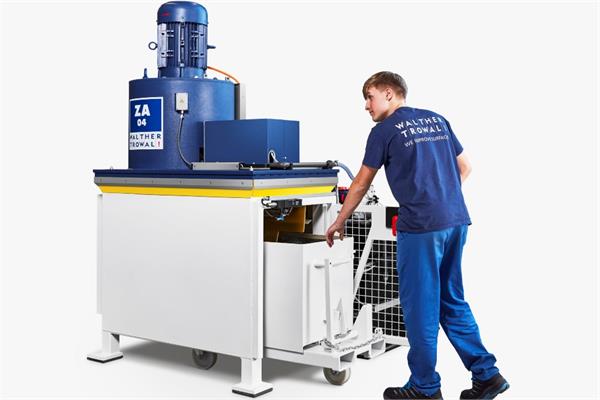
The new centrifuge developed by Walther Trowal ensures the automatic cleaning and recycling of the process water, saving time and costs in mass finishing.
Walther Trowal has recently presented the new automatic cleaning centrifuge ZA 04, an updated version of its process water cleaning and recycling machines that eliminates manual setup operations and reduces maintenance work, allowing to save resources, time and costs.
In surface finishing operations for metallic workpieces, the process water deriving from the mass finishing machines is contaminated with fines and particles from both the components and the processing media as well. In addition, it can contain oil and grease carried into the machine by the parts themselves. So, before it can be re-used in the finishing operation or charged to drain, the process water must be cleaned in a closed-loop recycling system in order to remove all contaminant elements.
The centrifuges developed and produced by Walther Trowal are equipped with a drum that rotates at high speeds, generating a centrifugal force that deposits the solids contained in the process water on the inner drum wall in the form of sludge. In addition, in case of higher sludge quantities that cannot be handled by manual emptying of the drum, the centrifuges are also equipped with a peeling knife that automatically discharges the sludge from the drum.
Moreover, the new compact peeling centrifuge ZA 04 features an integrated displacement-force measurement system that digitally controls the movement of the peeling knife, ensuring that – depending on the thickness of the sludge layer – the peeling knife always has the right distance to the inner drum wall. Furthermore, it allows the automatic setup of the machine by eliminating mechanical calibration operations. Finally, new centrifuge of Walther Trowal is more compact: it requires around 30% less space than its predecessor model and all operational and maintenance elements can be accessed from one side.